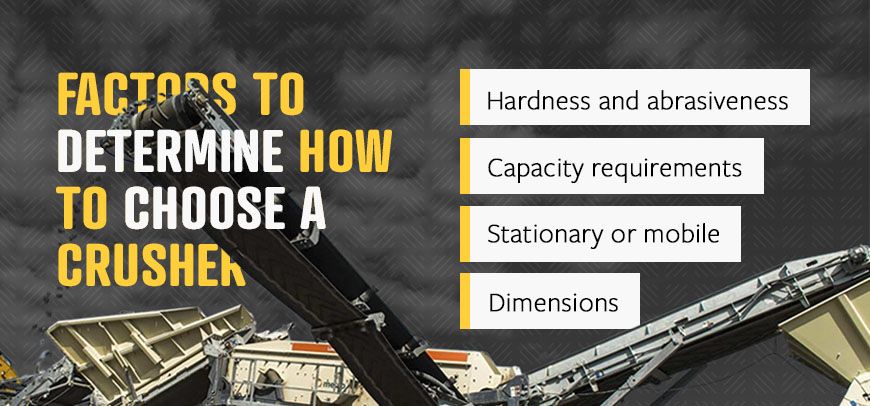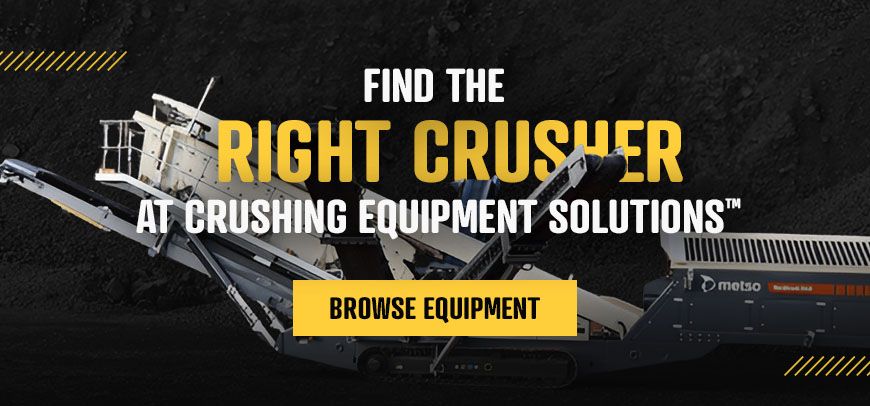Crushers are valuable machines for any team that needs to reduce building materials like concrete or stone into smaller pieces quickly. There are many different types of crushers, and determining which one best suits your project is essential for making a worthwhile investment that enhances productivity and efficiency. Explore the different types of rock crushers and the factors you should consider before choosing one for your tasks.
Choosing the Right Crusher: Types, Features and Applications
Choosing the Right Crusher: Types, Features and Applications
What Is a Crusher?
A crusher is a powerful machine that reduces large rocks into gravel, rock dust or rocks of a smaller size. These machines are most common in construction and mining, yet different types of rock crushers are suitable for various applications across industries. You will often see crushers being used to break up asphalt for roadwork tasks or demolition projects.
There are many different sizes of rock crushers, allowing you to meet varying capacities for specific jobs. You can find primary and secondary crushers for achieving coarse products, and tertiary or quaternary crushers for fine particle products.
Primary crushing makes it possible to move material on conveyor belts. These machines can accept raw materials and have the capacity to handle loads without blockages. Secondary crushing often helps achieve the most reduction possible at the most affordable price. Secondary crushing operations often do not need to consider product quality, except in the case of railway ballast. Alternatively, fine crushing operations are necessary for meeting quality requirements for fine products.
Types of Crushing Equipment
While all of these machines accomplish similar tasks, there are many features of rock crushers you must consider to determine the right choice for you. When it comes to finding the best crushing equipment, you want to ensure your choice will provide long-lasting solutions while enhancing worksite productivity.
1. Impact Crushers
Impact crushers use impact force to crush materials, and you can use soft and medium-hard rocks with this machine. These crushers can complete primary and secondary crushing, making them suitable for applications in recycling and quarry industries.
Impactors come in two different types:
- Horizontal shaft impactors: Horizontal models feature a housing space that opens and adjustable curtains with a rotor assembly and hammer. These machines typically have a low-profile design and offer limited expansion area. When materials enter the crusher, they make impact with the hammers before quickly striking against the curtains and rebounding into the hammer circle.
- Vertical shaft impactors: Vertical models are typically tertiary crushers that require you to feed materials into the crusher's center through a tube. The material reaches a rotating table or rotor before accelerating and moving into the outer shell or anvil ring. Crushing occurs as the materials make impact with this surface.
2. Jaw Crushers
Jaw crushers often perform primary crushing operations and are suitable for recycling, quarrying and mining operations. These machines are popular because they can crush almost any material type, including limestone, gravel, quartz, sand and granite. The materials are crushed between a moving jaw plate and a stationary plate as a pitman moves toward the stationary plate.
There are two main types of jaw models:
- Single-toggle: The pitman for these models is on an eccentric shaft, and a toggle plate holds the pitman in position at the bottom of the assembly. A rocking motion and eccentric motion cause a downward thrust.
- Double-toggle: These models have two shafts — a pivot shaft for the pitman to hang and an eccentric shaft to stimulate the toggle plates. The pitman swings toward the stationary plate rather than thrusting downward.
3. Sizers
Sizers can crush soft to medium-hard materials, which can be wet, sticky, dry or slightly abrasive. Heavy mining applications often use these models. Primary sizers crush materials between rotating rolls, and material at the right size passes between them to minimize fine generation. You can achieve high capacities at low speeds with sizers as well as place fine materials into the machine, unlike jaw crushers and similar models that require pre-screening.
4. Cone Crushers
Also known as gyratory crushers, cone crushers have a primary shaft that creates a crushing motion. A moving inner member and fixed outer crusher piece make crushing operations possible. You can find roller-bearing and shaft-type cone crushers with similar functions. Generally, the main difference between the two types is a rotating wedge within roller-bearing models. These machines can complete secondary and tertiary crushing operations.
Cone crushers are typically used to reduce abrasive materials with considerable hardness, and they are excellent choices when impact crushers are not suitable. Mining operations and aggregate production teams often use cone crushers.
5. Roll Crushers
These crushers form a crushing chamber with revolving drums. You can adjust the gap between the drums, and you can find corrugated or smooth crushing options for the drum surfaces. These machines are dependable and rugged but may not offer the same productivity as other models because they handle a reduced volume. However, these models offer close product distribution, making them suitable for chip stone.
How to Choose a Rock Crusher
Before choosing a crusher, you should consider several aspects regarding the machine model and the materials you're working with. Use these factors to determine how to choose a crusher:
- Hardness and abrasiveness: Consider the maximum force a crusher can deliver and that a material can withstand to determine if a model will work for your operation. Knowing the material you plan to use and whether it is particularly abrasive or hard can help inform your decision.
- Capacity requirements: Some machines can process higher capacities than others. Refer to the tons per hour on the machine to determine if a model will meet your capacity needs. Following these requirements is best practice for machine operation and can help you reduce the need for premature repairs.
- Dimensions: Similar to capacity requirements, various crushers can handle differing material dimensions. Ensure the thickness, width and length of your material is appropriate for a specific crusher.
- Stationary or mobile: Some applications may benefit from mobile crushers that you can move when necessary, while others need the enhanced sturdiness of a stationary crusher. Although you can move mobile crushers across a project site, they might not offer the same heavy-duty capabilities as some stationary models.

Find the Right Crusher at Crushing Equipment Solutions™
Choosing the right crushing equipment can be simple with a knowledgeable team on your side. At Crushing Equipment Solutions™, you can find crushing and screening solutions to complete projects in demolition, waste management, construction, aggregate creation, civil engineering and minerals processing. With more than four decades of experience, our team has the knowledge and skills you expect from a reliable provider.
Browse our crushing and screening equipment or contact us for more information about our products.

